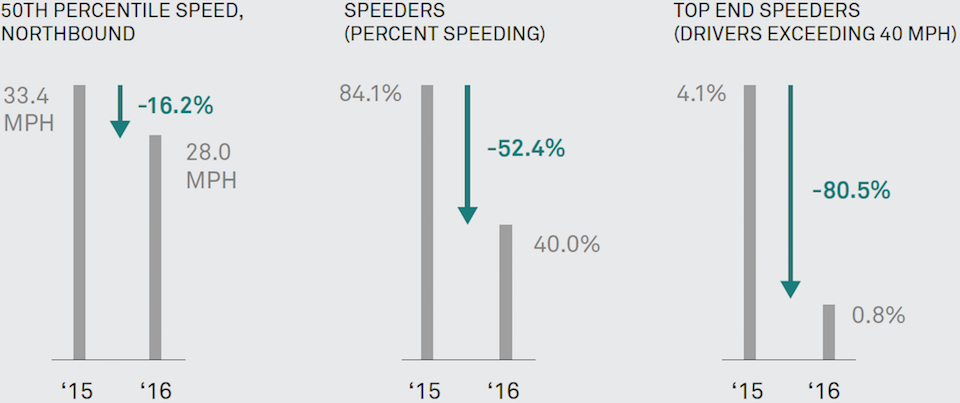On city streets, the most substantial risk comes from high-end speeding, even if it is typically only a small percentage of total traffic. As a result, changes in the number of high-end speeders is a primary metric for determining the efficacy of a speed limit change or safety project.
High-end speeding is measured as the number or percent of drivers exceeding specific, high-risk speed thresholds (e.g., over 30 or 35 mph, or greater than 10 mph over the target speed for most streets), in a typical 24 hour period.
Because high-end speeding is set to a specific threshold that does not change with the speed limit, this metric allows for apples-to-apples comparisons before and after a project or from site to site. The prevalence of high-end speeding is a better indication of risk than 85th percentile speed or the number of speeding vehicles, since there is sometimes a ‘long tail’ of high-end speeders. Well-done speed management can result in a dramatic change in high-end speeding, even when 85th percentile or median speeds do not change dramatically.
CASE STUDY
RAINIER AVENUE, SEATTLE
Speed management and street design changes can substantially reduce the amount of high-end speeding on a street. On Rainier Avenue in Seattle, a 4-lane-to-3-lane conversion resulted in up to a 16% decrease in median speed, and up to an 81% decrease in drivers exceeding 40 mph.
2015 speed limit: 30 mph
2016 speed limit: 25 mph

